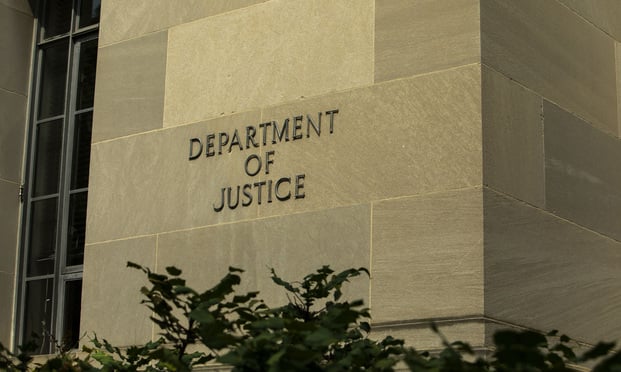Features

From DeepSeek to Distillation: Protecting IP In An AI World
Protection against unauthorized model distillation is an emerging issue within the longstanding theme of safeguarding intellectual property. This article examines the legal protections available under the current legal framework and explore why patents may serve as a crucial safeguard against unauthorized distillation.
Features

From DeepSeek to Distillation: Protecting IP In the AI World
Protection against unauthorized model distillation is an emerging issue within the longstanding theme of safeguarding IP. Existing countermeasures have primarily focused on technical solutions. This article will examine the legal protections available under the current legal framework and explore why patents may serve as a crucial safeguard against unauthorized distillation.
Features

What the Future Holds for the False Claims Act
What does the second Trump administration augur for the False Claims Act? The question remains how, not if, the Trump DOJ will change DOJ’s enforcement policies, whether they will maintain current enforcement policies, and what the impact will be, especially for the FCA.
Features

Talent Manager’s Fraud Claim, Over Buyout of His Share of Company Formed With Client, Is Struck Down
It isn’t unusual for talent managers and artists they manage to cofound and operate businesses together. Sometimes, though, the talent manager may claim the artist has violated the manager’s rights via the joint-business entity.
Features

AI Mastery for Legal Professionals
Mastering AI tools is vital for law firms striving to remain competitive. The increasing demand for prompt and effective services means firms that do not adapt may fall behind. Gaining expertise in AI equips legal professionals with essential skills to leverage technology effectively, ultimately driving innovation and maintaining relevance.
Features

Harmonizing a Debtor’s Right to File for Bankruptcy Against a Creditor’s Desire to Protect Its Financial Interests
How to harmonize a debtor’s right to file against a creditor’s desire to protect its financial interests in that debtor has sparked a number of different judicial opinions.
Features

How Commercial Real Estate Can Leverage AI’s Capabilities
AI has the capability to fundamentally transform commercial real estate transactions by enhancing efficiency and accuracy in due diligence, contract review, and market analysis. However, as the use of AI becomes more common place, the industry must continue to address challenges such as data privacy and algorithmic biases to ensure ethical and equitable outcomes.
Features

Underperformers Can Be Rehabilitated: Here’s How
Coaching is a powerful tool. It can be transformative for underperforming partners in law firms, addressing issues such as situational changes, practice impediments, and age-related challenges. By understanding these categories and following structured steps, firms can effectively coach their attorneys to meet expectations and enhance their performance.
Features

CRM As a Growth Strategy: Turning Data and AI Into Business Development Success
For years, customer relationship management (CRM) in law firms has often been viewed as a glorified Rolodex — a necessary but often underutilized system primarily seen as a data repository. However, as firms seek to drive business development, client engagement and revenue growth, CRM needs to evolve into a strategic growth platform.
Columns & Departments

Landlord & Tenant Law
DHCR’s Interpretation of Luxury Deregulation Rule UpheldIssues of Fact About High-Rent Vacancy Deregulation
Need Help?
- Prefer an IP authenticated environment? Request a transition or call 800-756-8993.
- Need other assistance? email Customer Service or call 1-877-256-2472.
MOST POPULAR STORIES
- The 'Sophisticated Insured' DefenseA majority of courts consider the <i>contra proferentem</i> doctrine to be a pillar of insurance law. The doctrine requires ambiguous terms in an insurance policy to be construed against the insurer and in favor of coverage for the insured. A prominent rationale behind the doctrine is that insurance policies are usually standard-form contracts drafted entirely by insurers.Read More ›
- A Lawyer's System for Active ReadingActive reading comprises many daily tasks lawyers engage in, including highlighting, annotating, note taking, comparing and searching texts. It demands more than flipping or turning pages.Read More ›
- The Brave New World of Cybersecurity Due Diligence in Mergers and Acquisitions: Pitfalls and OpportunitiesLike poorly-behaved school children, new technologies and intellectual property (IP) are increasingly disrupting the M&A establishment. Cybersecurity has become the latest disruptive newcomer to the M&A party.Read More ›
- Abandoned and Unused Cables: A Hidden Liability Under the 2002 National Electric CodeIn an effort to minimize the release of toxic gasses from cables in the event of fire, the 2002 version of the National Electric Code ("NEC"), promulgated by the National Fire Protection Association, sets forth new guidelines requiring that abandoned cables must be removed from buildings unless they are located in metal raceways or tagged "For Future Use." While the NEC is not, in itself, binding law, most jurisdictions in the United States adopt the NEC by reference in their state or local building and fire codes. Thus, noncompliance with the recent NEC guidelines will likely mean that a building is in violation of a building or fire code. If so, the building owner may also be in breach of agreements with tenants and lenders and may be jeopardizing its fire insurance coverage. Even in jurisdictions where the 2002 NEC has not been adopted, it may be argued that the guidelines represent the standard of reasonable care and could result in tort liability for the landlord if toxic gasses from abandoned cables are emitted in a fire. With these potential liabilities in mind, this article discusses: 1) how to address the abandoned wires and cables currently located within the risers, ceilings and other areas of properties, and 2) additional considerations in the placement and removal of telecommunications cables going forward.Read More ›
- Guidance on Distributions As 'Disbursements' and U.S. Trustee FeesIn a recent case from the Bankruptcy Court for the District of Delaware, In re Paragon Offshore PLC, the bankruptcy court provided guidance on whether a post-plan effective date litigation trust's distributions constituted disbursements subject to the U.S. Trustee fee "tax."Read More ›
